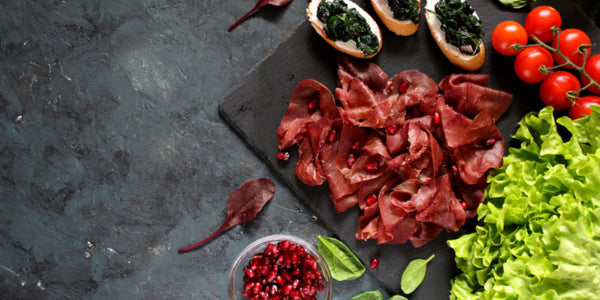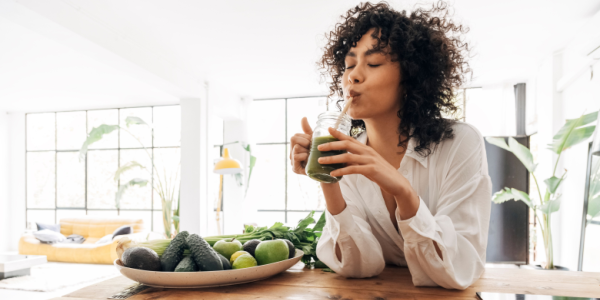
Anemia is a condition in which there is lower than normal healthy red blood cells or hemoglobin in the blood.
Though there are different types of anemia, particularly linked to deficiencies in folate and vitamin B-12, iron-deficiency anemia is most common.
Iron is an important component of hemoglobin, which transports fresh oxygen throughout the body. Without sufficient hemoglobin, the body's organs and cells are deprived of oxygen and feelings of fatigue and weakness are common.
Additional anemia symptoms and signs of low iron may include:
• Loss of appetite
• Pale skin
• Dizziness
• Brittle nails
• Frequent headaches
• Tingling sensations in the legs
• Sore or inflamed tongue
• Fast heartbeat
• Shortness of breath
Even in the absence of any anemia symptom or indication, the general population can benefit from consuming food high in iron.
There are also populations who may need extra iron due changes in blood volume, blood loss, or inadequate iron intake, including:
• Women of childbearing years or who are pregnant
• Infants who are not receiving sufficient iron from formula or breastmilk
• Older adults related to poor diet and coexisting medical conditions
• Vegetarians, vegans, or simply individuals following a more plant-based diet
• Those with a gastrointestinal condition, including ulcers, hemorrhoids, polyps, and cancers of the intestine
• Frequent blood donors
Ultimately, consult with a primary care provider to prevent and manage anemia safely and effectively. They will help develop a plan to meet individualized needs, including recommendations regarding what to eat for iron-deficiency anemia.
Foods to Eat for Anemia
1. Beef
Iron content: 2.2 mg per 3-ounce serving of lean ground beef
Beef and other red meats are well-known for their iron content.
What's more, iron from animal sources is known as heme iron. Compared to non-heme iron, which is provided from plant-based foods, heme iron is better absorbed.
Choosing grassfed beef can also lower saturated fat intake and provide more polyunsaturated fats (PUFAs), and a larger amount of omega-3 fatty acids which may offer anti-inflammatory properties and lower the risk of chronic disease.
2. Organ Meats
Iron content: 3.6 mg per 1 ounce chicken liver
While not all enjoy organ meats, those who do receive a healthy dose of iron. They are also packed with other nutrients, including protein, vitamin B12, folate, and zinc.
Organ meats, including liver and gizzards, are commonly consumed from cows, chickens, pigs, and goats.
3. Turkey
Iron content: 2 mg per 3 ounces of dark turkey meat
While not as rich of suppliers as red meats, turkey and other poultry products also suppliers of heme iron.
Choosing dark poultry products also provides an extra punch of iron, zinc, riboflavin, niacin, vitamins B-6 and B-12.
4. Fish
Iron content: 1.3 mg per 3-ounces of light canned tuna
Fish such as tuna, halibut, salmon, and tuna are great suppliers of heme iron.
They are also packed with omega-3 fatty acids, a type of polyunsaturated fat known to support heart health and reduce inflammation.
5. Mollusks
Iron content: 2.4 mg per 3 ounces steamed clams
Clams, mussels, and oysters, and other mollusks are all rich in iron.
Mollusks are also low in fat, high in protein, and contains a healthy dose of other vitamins and minerals, including copper, magnesium, phosphorus, and zinc.
6. Leafy Greens
Iron content: 1 mg per 1 cup raw spinach
Spinach, collard greens, kale, Swiss chard, and other leafy greens are packed to the brim with nutrients, including iron, calcium, folate, and vitamin C.
Furthermore, vitamin C strongly enhances the absorption of non-heme iron sourced from dietary sources.
Leafy greens are also extremely versatile and can be mixed into a salad, sautéed with garlic and olive oil, and blended and hidden in smoothies and sauces.
7. Quinoa
Iron content: 1.4 mg per ½ cup cooked quinoa
Quinoa is a good plant-based source of iron and protein.
And though often identified and treated as a whole grain, quinoa is actually a pseudo cereal and seed.
It is also considered to be a complete protein and delivers the essential amino acids, which can only obtained through diet unlike nonessential amino acids that can be produced in the body.
8. Fortified Cereals
Iron content: 1.4 mg per ½ cup cooked quinoa
Fortified foods, cereals included, contain added vitamins and minerals. Most breakfast cereals are fortified with iron, riboflavin, niacin, B-6, folic acid, pantothenic acid, iron, calcium, sometimes, vitamin D according to Nestle Cereals.
It is important to note cereals are often paired with milk, but its calcium content may lower iron absorption. Unless consuming try, also include other iron sources than that morning cereal.
9. Soy
Iron content: 14.6 mg per ½ cup raw soybeans
Soy and soy-based products is a rich source of iron, which makes it especially valuable for those following a plant-based diet.
However, phytate acid (phytate) found in foods such as soy, legumes, nuts, and seeds may reduce the absorption of non-heme iron. Pairing soy with vitamin C may help enhance absorption, with example sources including broccoli, tomatoes, leafy greens, peppers, berries, and oranges.
10. Beans
Iron content: 7.6 mg per ½ cup raw kidney beans
Mostly known for their plant-based protein and fiber, beans are also rich in iron.
Consuming black, pinto, white, and other bean varieties with a vitamin C source may help increase the absorption of iron. For instance, tomatoes and bell peppers to a batch of chili.
11. Lentils
Iron content: 3.3 mg per ½ cup cooked lentils
Apart of the legume family, lentils are similar to beans and come in red, pink, and other colorful varieties.
Again, pairing with a vitamin C-rich source can also help increase the non-heme iron absorption.
12. Pumpkin Seeds
Iron content: 1 mg per 1 ounce pumpkin seeds
Pumpkin seeds are rich in iron, along with supplying healthy fat, protein, fiber, potassium, iron, magnesium, zinc, copper, and selenium.
Pumpkin seeds and other seed varieties are valuable snacks as they are convenient, increase satiety, and provide a satisfying crunch.
General Guidelines of an Anemia Diet
While the best anemia diet and eating pattern is individualized, these guidelines can help ensure adequate iron intake:
• The intake of animal products, red and organ meats especially, helps ensure sufficient intake of heme iron.
• Plant-based sources of non-heme iron include whole grains, legumes, nuts, seeds, and fortified cereals.
• Cook in a cast iron skillet to increase iron content.
• Be mindful of iron-inhibitors, including foods rich in phytate, calcium, and tannins, which are sourced from tea and coffee.
• Enhance absorption of iron, non-heme sources especially, by pairing with vitamin C-rich source.
• Space iron intake throughout the day.
Reference:
Iron. Linus Pauling Institute.







